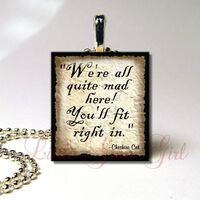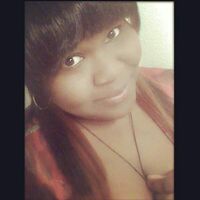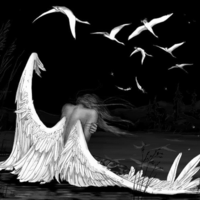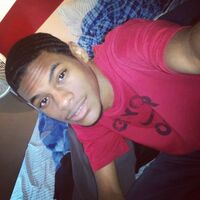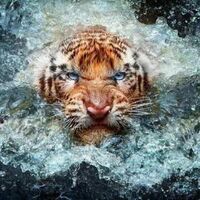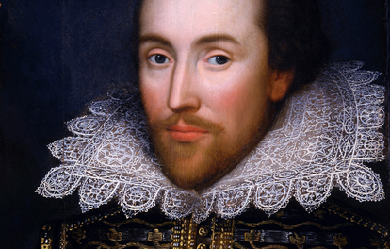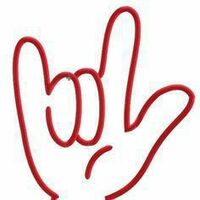
Info
Angeles and Fuensanta
Julio Romero de Torres
1909
Museo Julio Romero de Torres
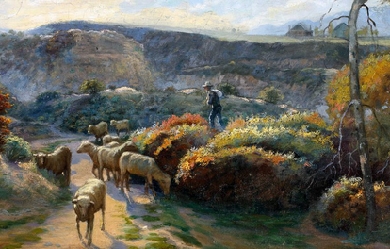
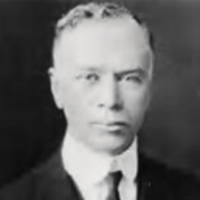
Arthur Chapman (June 25, 1873– December 4, 1935) was an early twentieth-century American poet and newspaper columnist. He wrote a subgenre of American poetry known as Cowboy Poetry. His most famous poem was Out Where the West Begins. Out Where the West Begins Circa 1910, after reading in an Associated Press report of a conference of the governors of the western states at which the geographic beginning of the U.S. West was disputed, he hastily composed what was to become his most famous poem, “Out Where the West Begins,” celebrating the people and the land of the frontier. The first of its three seven-line stanzas ran "Out where the handclasp’s a little stronger, / Out where the smile dwells a little longer, / That’s where the West begins; / Out where the sun is a little brighter, / Where the snows that fall are a trifle whiter, / Where the bonds of home are a wee bit tighter, / That’s where the West begins." The poem was an immediate sensation, widely quoted, often imitated, and more often parodied. (One popular anonymous take-off read, in part, "Where the women boss and the men folk think / That toast is food and tea is a drink; / Where the men use powder and the wrist watch ticks, / And everyone else but themselves are hicks / That’s where the East begins.") According to the dust jacket of Chapman’s 1921 novel, Mystery Ranch, "To-day ["Out Where the West Begins"] is perhaps the best-known bit of verse in America. It hangs framed in the office of the Secretary of the Interior at Washington. It has been quoted in Congress, and printed as campaign material for at least two Governors. . . . [Chapman’s poems possess] a rich Western humor such as had not been heard in American poetry since the passing of Bret Harte.” The popularity of “Out Where the West Begins” led Chapman to arrange for its publication in book form, and in 1916 he produced Out Where the West Begins, and Other Small Songs of a Big Country, a modest fifteen-page volume issued by Carson-Harper in Denver. It was an immediate success and Houghton Mifflin of Boston and New York immediately offered to publish a larger collection. Out Where the West Begins, and Other Western Verses, as it was renamed, appeared in 1917 with fifty-eight poems on ninety-two pages. The title poem was widely reprinted on postcards and plaques. It was frequently set to music, first in 1920, and achieved a separate life on the concert stage. Chapman followed the popular volume in 1921 with the equally successful Cactus Center: Poems of an Arizona Town, containing thirty poems and running to 123 pages. The Literary Review wrote of the verse, "In vigor of style, [it] irresistibly suggests a transplanted Kipling" (19 Feb. 1921, p. 12). The Move East In 1919 Chapman moved to New York City, where he lived in a fashionable neighborhood on the east side of Manhattan and took a job as a staff writer for the Sunday edition of the New York Tribune. He held that position until his retirement in 1925, the year after the newspaper became the New York Herald Tribune. After his wife died in 1923 Chapman married Kathleen Caesar, an editor of the Bell Syndicate; no children were born of his second marriage. He wrote fiction and nonfiction throughout his career as a journalist and continued after he retired. His first effort at book-length fiction, Mystery Ranch (1921), combined the genres of western adventure and murder mystery. The Literary Review dismissed it as “melodramatic” and stated that it provided “little for the seeker of literary values” (19 Nov. 1921, p. 190), but the New York Times more charitably credited Chapman, “known heretofore as a poet of the West,” with being “a clever technician in a new field” (13 Nov. 1921). The book had modest commercial success, but Chapman’s second novel, John Crews (1926), an equally stereotypical adventure-romance of frontier life, sold better. Described by the New York Herald Tribune as “a lively and continuously readable yarn,” it was successful enough to have a reprint edition by another publisher in its first year (28 Mar. 1926). In 1924 Chapman capitalized on his reputation as an expert on the U.S. West with the publication of The Story of Colorado, Out Where the West Begins, a richly illustrated history of the state. His final book was an extensively researched and detailed volume, The Pony Express: The Record of a Romantic Adventure in Business (1932), complete with bibliography, index, and maps. Both were well received by the critics and the public. It was, however, for his poetry that Chapman became and remained famous. His western dialect poems and “Out Where the West Begins” continued to be quoted and to appear in anthologies long after his death, and both of his volumes of verse were brought out in new editions by other publishers as late as 2010. References Wikipedia—https://en.wikipedia.org/wiki/Arthur_Chapman_(poet)

Utterly undone, I picked up the pieces... Reborn, I started afresh... Newly made, I became greater than I had ever imagined. I'm 23 and every day, I learn something new about love, life, and how to do it right. Poetry is a vehicle for thoughts, passion, ideas, and so much more. Tell me what you think and don't hold back--I wouldn't be posting it here if I weren't seeking an honest response. I believe in community sharing and that families sprout up in the least expected places. As you read, I hope you feel at home and I happily and gratefully extend the familial hand of fellowship to you.
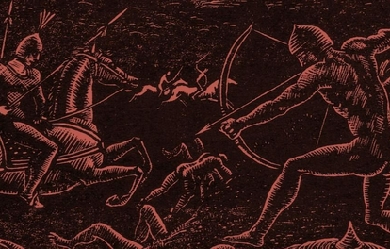
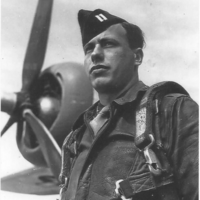
Ralph Nicholas Chubb (8 February 1892– 14 January 1960) was an English poet, printer, and artist. Heavily influenced by Whitman, Blake, and the Romantics, his work was the creation of a highly intricate personal mythology, one that was anti-materialist and sexually revolutionary. Life Ralph Chubb was born in Harpenden, Hertfordshire. His family moved to the historic town of St Albans before his first birthday. Chubb attended St Albans School and Selwyn College, Cambridge before becoming an officer in the First World War. He served with distinction but developed neurasthenia, and he was invalided out in 1918. From 1919 to 1922 Chubb studied at the Slade School of Art in London. It was there that he met Leon Underwood and other influential artists. He went on to contribute several articles and poems for Underwood’s magazine, The Island. Although his work was displayed at such venues as the Goupil Gallery and the Royal Academy of Art, his paintings did not sell. There are several in public collections in Britain. His major painting The Well (1920) is in Wakefield; Southampton has bathers with boys wrestling, and there are nudes at Leamington, all illustrated in the Public Art Foundation catalogues. He moved with his family to the village of Curridge, near Newbury in Berkshire. He began to devote his artistic talents to the printed works which would remain his chief labour in life. His books were created in several chief phases. His typeset books of the twenties were a humble offering, exhibiting Chubb’s talent for woodcutting and his quaint, visually inspired poetry. Even at this early stage, Chubb’s lifelong obsession with adolescent males was beginning to become apparent. He expands upon this theme more explicitly in An Appendix, a pederastic and spiritualist manifesto duplicated from a cursive manuscript. An Appendix was the first of his printed works to be printed in his own hand; he soon followed this with the first of his opulent lithographic books, The Sun Spirit. Throughout the nineteen-thirties, Chubb’s books became more elaborate and appealing. Water Cherubs crystallizes Chubb’s aesthetic of the youthful male form, and The Secret Country unfolds like an illuminated manuscript, recounting stories of Chubb’s family and his journeys among the Romani of the New Forest in Hampshire. Chubb’s printing press was interrupted by the war, but in 1948 he entered into the third period of career with two massive volumes: The Child Of Dawn and Flames of Sunrise. Each page of these two volumes is crowded with obscure digressions on Chubb’s mythology and drawings of symbolic significance. Briefly summarized, Chubb’s vision was a prophecy of the redemption of 'Albion’, or England, by the boy-god Ra-el-phaos, of whom Ralph claimed himself to be the prophet and herald. This echoes an earlier announcement to be found in The Heavenly Cupid: I announce a secret event as tremendous and mysterious as any that has occurred in the spiritual history of the world. I announce the inauguration of a Third Dispensation, the dispensation of the Holy Ghost on earth, and the visible advent thereof on earth in the form of a Young Boy of thirteen years old, naked perfect and unblemished. Other themes run through all of Chubb’s work. He was forever haunted by the memory of a young chorister at St Albans who disappeared from Chubb’s life just as he had summoned up the courage to speak to him. Similarly, a brief sexual relationship with another boy when Ralph was 19 seemed to serve as a template for future visions of paradise. Chubb’s books become progressively more self-involved and paranoid. Seeking to articulate his pederastic desires, he created a personal mythology which explained everything in terms only he could understand. Nonetheless, Chubb’s work is of fascinating psychological significance; each of the various angels, knights, seers, and boy-gods in his dream world represents an aspect of his introspective and persecuted self. Chubb, like many other artists of his generation, resented science for its intrusion into his imagination. He disparaged the scientists, orthodox theologians, and politicians of world, accusing them of squelching his personal thirst for liberty. In 1927 he wrote: Existence, besides being a miracle, is a symbol. Albeit here for inscrutable purposes the spirit is only to be discerned as it were in a distorting-glass. (The Book of God’s Madness) Chubb sought to persuade his readers in An Appendix of the verity of his solipsism by illustrating some examples of serendipitous events from his life. His aim is more on the mark when he excoriates the taboos and frustrations of modern life. The green green hills, the blue blue sky, blue sea, great golden SUN, yellow dandelions, the pink naked beauty of ripe boyhood, deathless free and happy, brimming with health. This I must have. Nothing less than this can ever satisfy me! GIVE ME MY HEAVEN! GIVE ME MY HEAVEN! (Water-Cherubs) Failing in health and facing continuing legal and financial difficulties, Ralph Chubb abandoned his controversial works in the mid-fifties, and began to collect and reprint his early poems and childhood memories. Treasure Trove and The Golden City (published posthumously) are devoid of the usual profusion of naked, lissome youths, but instead offer a glimpse into his youthful imagination, and some of his most charming poetry. In the final years of his life he donated his remaining volumes to the national libraries of Britain. He died peacefully at Fair Oak Cottage in Hampshire and was buried next to his parents at the Kingsclere Woodland Church. Chubb’s own assessment of his work conforms to the general critical reaction: I do not necessarily claim to be a great artist or writer; but I claim to be a true spirit– this is a subtler test. Seek me out; but you may not find me. (An Appendix) Works * None of the editions of Chubb’s books exceed more than 200 copies, and some of his lithographed masterworks exist in only 30 or 40 copies, of which a mere 6 or 7 are meticulously hand-colored by Chubb. * The dates and titles of Chubb’s printed works are given below. Early typeset works * 1924 Manhood * 1924 The Sacrifice of Youth * 1925 A Fable of Love & War * 1927 The Cloud & the Voice * 1928 Woodcuts * 1928 The Book of God’s Madness * 1929 An Appendix (duplicated hand-written text) Lithographed texts * 1930 Songs of Mankind * 1931 The Sun Spirit * 1934 The Heavenly Cupid * 1935 Songs Pastoral and Paradisal (illustrated by Vincent Stuart; script by Helen Hinkley) * 1936 Water Cherubs * 1939 The Secret Country Post-war prophetic texts * 1948 The Child of Dawn * 1953 Flames of Sunrise Juvenalia and early romances * 1957 Treasure Trove * 1960 The Golden City Posthumous works * 1965 The Day of St Alban * 1970 Autumn Leaves References and further reading * Cave, Roderick (1960). In Blake’s Tradition: the Press of Ralph Chubb. The American Book Collector. 11 (2), p8-17 * Cave, Roderick (1960). 'Blake’s Mantle’, a Memoir of Ralph Chubb. Book Design and Production. 3 (2), p24-8 * D’Arch Smith, Timothy (1970). Love in Earnest. London: Routledge & Kegan Paul. * Rahman, Tariq (1991). Ephebophilia and the Creation of a Spiritual Myth in the Works of Ralph Nicholas Chubb. Journal of Homosexuality. 20 (1-2), p103-127 * Reid, Anthony (1970). Ralph Chubb: The Unknown. Reprinted from The Private Library. 3 (3-4). References Wikipedia—https://en.wikipedia.org/wiki/Ralph_Chubb
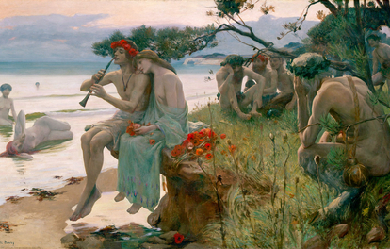
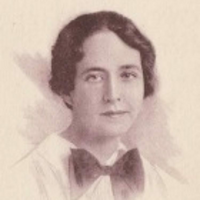
Zora Bernice May Cross (18 May 1890– 22 January 1964) was an Australian poet, novelist and journalist. She was born on May 18, 1890 on Eagle Farm, Brisbane to Earnest William Cross and Mary Louisa Eliza Ann. Her father was a Sydney born accountant. Cross inherited her love for literature from both her parents, poetry from her mother and Celtic knowledge from her father, who was also the son of an Irish printer. and was educated at Ipswich Girls’ Grammar School and then Sydney Teachers’ College from 1909 to 1910. She taught for three years and then worked as a journalist, for the Boomerang and then as a freelance writer. On March 11, 1911, she married Stuart Smith but later refused to live with him. This led to her marriage being dissolved on September 10, 1922. Later on in her life, Cross had a “de facto” husband, David McKee Wright, who she had two daughters with.
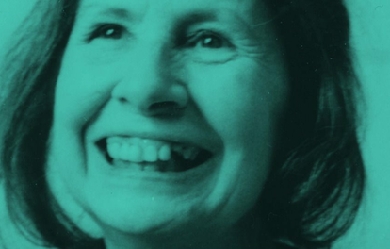
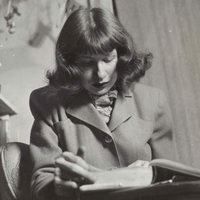
Amy Clampitt (June 15, 1920– September 10, 1994) was an American poet and author. Life Amy Clampitt was born on June 15, 1920 of Quaker parents, and brought up in New Providence, Iowa. In the American Academy of Arts and Letters and at nearby Grinnell College she began a study of English literature that eventually led her to poetry. She graduated from Grinnell College, and from that time on lived mainly in New York City. To support herself, she worked as a secretary at the Oxford University Press, a reference librarian at the Audubon Society, and a freelance editor. Not until the mid-1960s, when she was in her forties, did she return to writing poetry. Her first poem was published by The New Yorker in 1978. In 1983, at the age of sixty-three, she published her first full-length collection, The Kingfisher. In the decade that followed, Clampitt published five books of poetry, including What the Light Was Like (1985), Archaic Figure (1987), and Westward (1990). Her last book, A Silence Opens, appeared in 1994. She also published a book of essays and several privately printed editions of her longer poems. She taught at the College of William and Mary, Smith College, and Amherst College, but it was her time spent in Manhattan, in a remote part of Maine, and on various trips to Europe, the former Soviet Union, Iowa, Wales, and England that most directly influenced her work. Clampitt was the recipient of a 1982 Guggenheim Fellowship, a MacArthur Fellowship (1992), and she was a member of the American Academy of Arts and Letters and the American Academy of Poets. She died of cancer in September 1994.

I was Discovered in the basement of "Jeff Davis Hospital" nearly dead from over stuffing my frame with "Rat Milk" rescued by two "Scottish Strippers" whom earned there living at "Natchez Under the Hill" Both parents, Tried to teach me as I grew older to escape any Mental obstacle, I never paid attention, I just kept craving "Beutiful Breast Milk" that stared at me each morning as I laid hopelessly in the middle of my mother and mother, with a "Old Clothe Diaper" constructed from Dollar bills that were stuffed in the "Oversized Bra's" of both of my parents the "Night before" Just kidding, Everything's true, Except for the two female parents, the "Money Constructed Diaper" and the "Rats Milk"........ It was a "Cat" My goal is to truly "Capture the Art of Writing" I'm not the Best, And I'll never Claim to be! I just want to join and mingle, With my "Fellow Poets" Dream, Write, And always Remember, That Your "Right" and I'm "Left" Handed
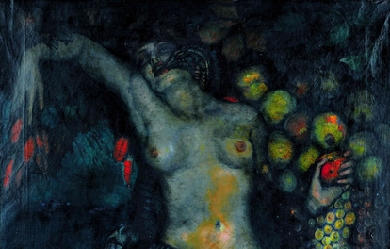
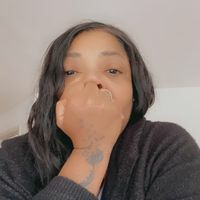
Poetry ✍🏽 is the only way I will make it out of this shit alive. Passionate wordsmith and published author, I am the creative force behind the powerful books Wounds to Words and the eagerly anticipated chapbook UnMasked. With an unwavering focus on exploring trauma and healing, I have dedicated my craft to shedding light on these transformative journeys. Poetry is not just a medium for me; it is my very essence—a profound tool that allows me to convey emotions in their rawest form. Through evocative verses, I aim to touch hearts, spark introspection, and inspire change in those who resonate with my work. My writing delves deep into the human experience, inviting readers into a world of resilience and growth. Join me as we embark on an exploration of shattered pasts gracefully woven into empowering narratives of self-discovery. Let our shared journey through poetic expression ignite conversations that heal souls and foster empathy within our communities.
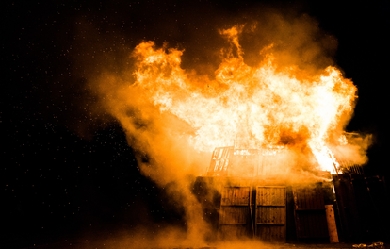
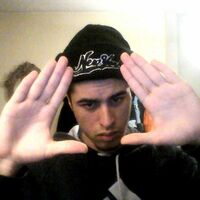
I'm Chay, I love to express myself. I used to write my rhymes down on paper and tell the paper how i feel, but now i can go on here tell everyone i feel. im an angry person a lot has happened this year and i just want to express it all. sometimes i want to blow up. sometimes i want to do stupid things. but in the end i write it down so i dont end up hurting someone or destroying things around the house.
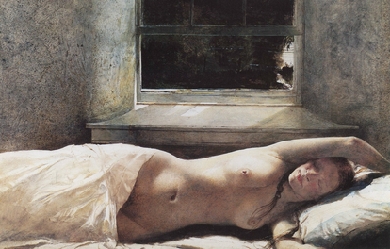
Books @ amazon.com/author/sashalogan More content at Allpoetry.com/sashalogan Writing random thought. Born Downriver, 11 miles south of Detroit. Moved to Cleveland area at age 14. Worked as a baker and in the steel/metal industry. Crime in America is high. Rent in America is high. You get what you pay for. I'm living in Michigan now. The less you have, the less you have to deal with. ✌️ and ❤️
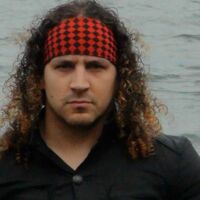
Jorge Santa Cruz is Habanero. Graduated in communication at Florida International University, he writes non-linear fiction. His novels can be found at his webpage: www.alas.city or at Amazon: (http://goo.gl/SyALxi) Jorge Santa Cruz es habanero. Graduado de periodismo en la Florida International University, escribe novelas de ficción (no lineales) tanto en español como en inglés. Puede encontrar sus novelas en su página web: www.alas.city o en Amazon : (http://goo.gl/SyALxi)

Cindy Christmas is an International Author. Cindy was born on February 27, 1985, in the small Island of Barbados. Her parents are Carol Christmas and Grantley Reeves. Cindy has an older brother from her mother named, Marvyn Christmas. Cindy is the only child, on her father's side. Cindy's mother Carol, named Cindy, after her favorite singer, Cindy Lauper. Cindy's mother Carol, moved to New York, when Cindy was only a year old. Cindy was raised by MariAnne Christmas who was Carol's mother. In January 1998, Cindy had moved to America to live with her mother, because her grandmother MariAnne wasn’t able to take care of Cindy anymore. At twelve years old, Cindy went to Saint Thomas Moore Elementary School. After Cindy graduated from there, she went to Excel High School. Cindy then decided to further her education by attending Penn Foster College, she was studying to get her Bachelor's degree in Criminal Justice. However, Cindy wasn’t able to finish her studies at Penn Foster College. As a teenager, Cindy used to spend most of her time listening to music, drawing and writing. Cindy used to write down her feelings on paper, because she was too shy, to express herself to anyone, so if Cindy was feeling angry, sad, happy or any kind of emotions at all, she would write them down. Cindy was writing from the age of thirteen. Cindy's hobbies are: fishing, sightseeing and traveling. Cindy is currently studying to get her Bachelor's degree in Accounting. Cindy got pregnant at eighteen years old, and she has a beautiful daughter named Cristal Christmas. Cristal was born on July 28, 2004 in America at Washington Hospital. Cindy had a few jobs working as a Retail Salesperson, Waitress, Bakery clerk, Cashier and Security Guard. One day Cindy wrote a poem as a joke and she sent it to a poetry company, and the company wanted to publish Cindy's poem and put it in their own book, so that's what inspired Cindy to write books.
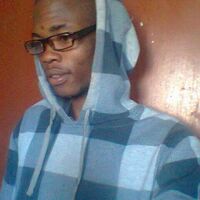
i write to live and live to write.writing choose me not the other way around.my work its the reflection of the inner me.i write also to save lifes ans as well as to inspire,transform and most importantly to save one life at time throw poetry. my vision is to help people discover their purpose throw my writings

I hail from Southwest Virginia and I am currently a student of Social Work at Concord University. My interest in human behavior is what drives my poetic endeavor. Inspirations to my work include Poe, Whitman, and Shakespeare. I've been writing poetry since I was about 13 years old but this is the first online-based setting my poetry has entered.


